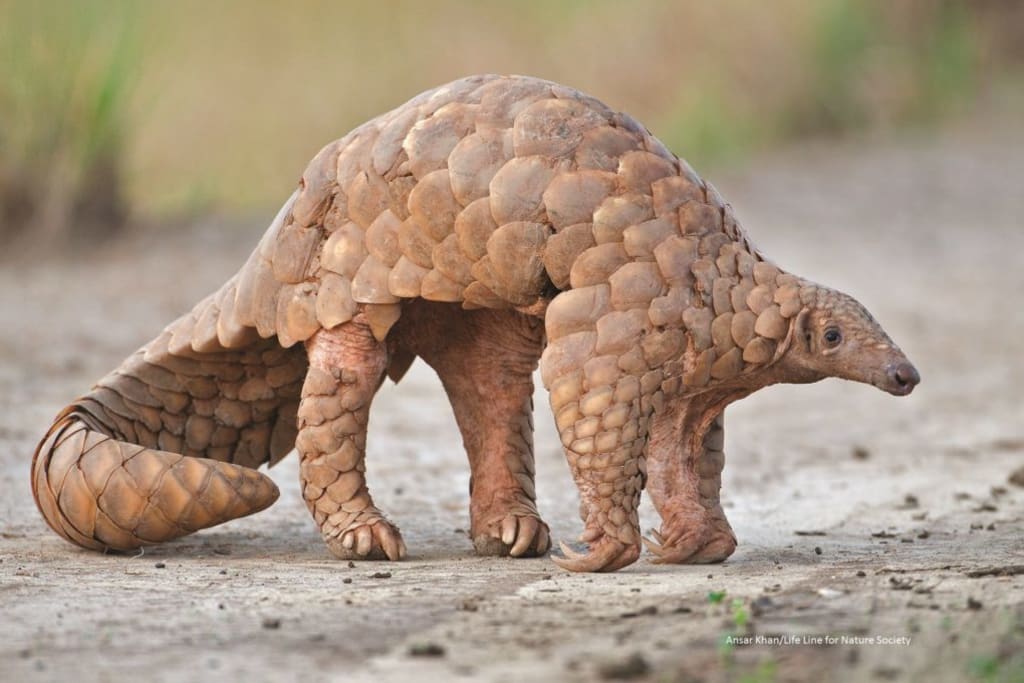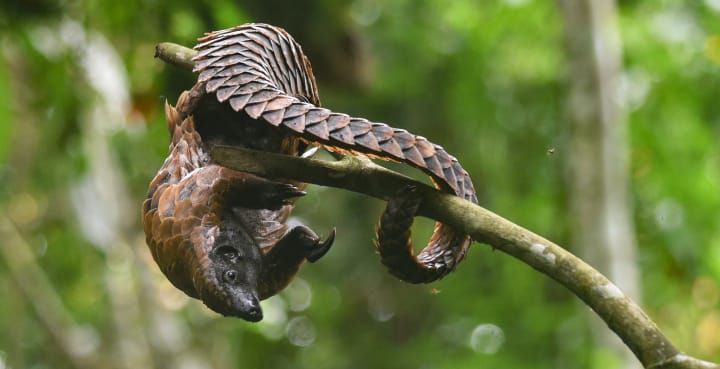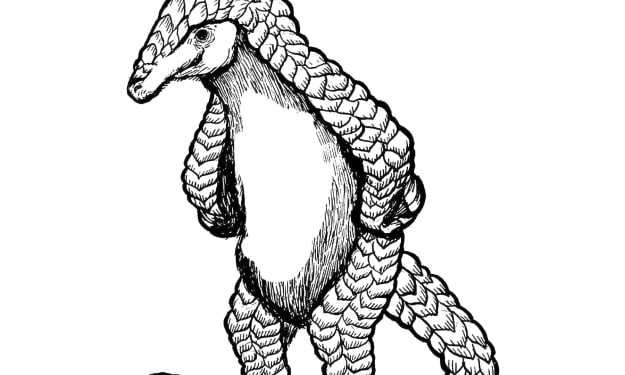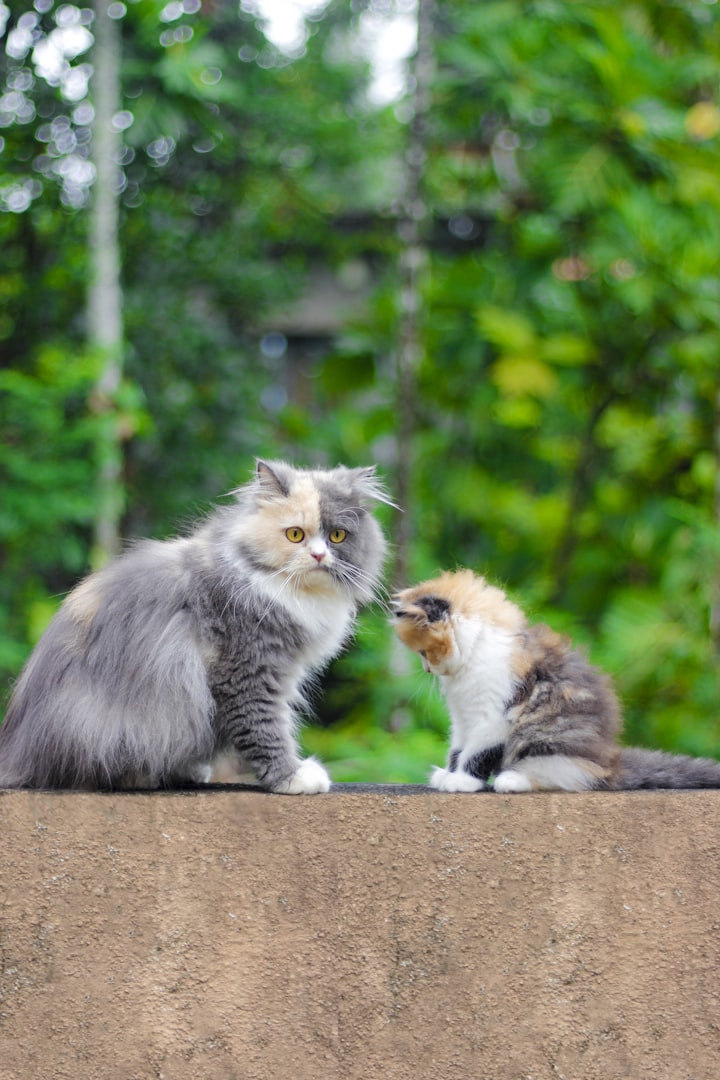Pangolins
They look like they might be dinosaurs or aliens...

Introduction
Pangolins are the only mammals to have scales. The scales of pangolins are very strong; when they are threatened pangolins curl into a ball to protect themselves and can withstand an attack from a lion or tiger. There are 8 species of pangolins, 4 in Africa and 4 in Asia. There are pangolins in rainforests, woodlands, swamps and savannas. Pangolins are sometimes referred to as “scaly anteaters” or “walking pinecones.” All species of pangolins are endangered.
Diet
Pangolins eat ants or termites. One pangolin can eat 70 million insects a year. In some species their tongue is longer than their body. It is sticky and they use it to catch ants within their hills. When not in use, their tongue is curled up within a chest cavity. Pangolins have no teeth, they swallow their prey alive. They have scales within their stomach, and they swallow rocks to help grind up ants. When an anteater attacks an anthill, ants will swarm its body and bite the anteater until it goes away. However, this strategy doesn't work well against pangolins because of their scales. Ants will try to attack the pangolin's sensitive flesh inside their nose and ears. However, Pangolins actually have muscles that can close their nose and ears. Ground Pangolin have powerful front claws for digging into termite mounds, in fact their front claws are so overdeveloped that they no longer walk on them, and are actually bipedal.
This article will focus on two of the pangolin species.

Giant Pangolin
The largest of the pangolins, it can be 5 feet long and over 70 pounds. They live in forests or savannas of west and central Africa. They are nocturnal, spending the day in underground burrows. They don’t dig their own burrows but use those created by other animals. They avoid transformed land and so are vulnerable to habitat loss. Because they are nocturnal and solitary they are hard to study, their reproduction habits are not well known, but its believed the only time they come together is to mate. A male will mark his territory and a female will seek him out. If two males encounter each other they may fight with their tails.

Black Bellied Pangolin
The smallest of the pangolins, it is only 2-4 pounds in weight and about 3 feet long. It is also known as the long tailed pangolin, with its tail accounting for two thirds of its body length. It also lives in the forests of central and west Africa, usually near the water. Black bellieds are arboreal, spending most of their lives in trees. It was previously thought that all pangolins were nocturnal, but black bellieds are actually diurnal, sleeping in hollow trees during the night. One group of conservationists waited till nightfall to release a black bellied back into the wild, only to have the creature go to sleep on them. Pangolins have no scales on their bellies, and the black bellied’s dark skin contrasted with their vibrant ocher scales makes them particularly beautiful.
Threats
All species of pangolin are endangered. Their scales are used in traditional Chinese medicine. The scales are made of keratin, the same material that makes up your fingernails, and have no medicinal properties. Pangolin meat is also considered a prestige meal in China. With Asian species of pangolin already having been driven to the brink of extinction, poachers have turned to African species. Pangolins curl into a ball to protect themselves, which is very effective against leopards, but poachers can just pick them up and carry them away. An estimated 100,000 pangolins are trafficked to China every year, making them the most poached animal in the world.
Pangolins might have been the intermediate host that allowed the deadly coronavirus disease COVID-19 to spread from bats to humans. Pangolins are shy, solitary creatures that avoid humans. Without poaching this pandemic may never have happened.
No one needs a pangolin scale except a pangolin.
In Culture
Pangolins were featured as a Google doodle on Valentine's Day, 2017. Pangolins are usually solitary creatures, meeting only to mate. This doodle is actually a playable video game featuring a pangolin trying to meet a mate on Valentine’s Day.

Strange Planet is a cartoon strip by Nathan W. Pyle about aliens doing things that are routine on Earth, but describing those tasks in a way that is well, alien. There was recently a strip about one of the aliens becoming obsessed with pangolins, or as they are described here an “armored creature.”
In 1834 an article in The Lancet said pangolins “occupy the lowest place” and had a mark of “general inferiority” on the grounds that they were “edentulous” (without teeth). Nineteenth century biologists were prone to these sort of weird value judgements. (Charles Darwin referred to the the marine iguana as “a hideous-looking creature, of a dirty black colour, stupid and sluggish in its movements.”)
In Zimbabwe tradition dictates that if you find a pangolin then you should give it to your chief. If you've ever been in a Zimbabwe Chief's home and wondered "Why does this dude have so many pangolins?" now you know.
If people are interested in helping pangolins, they should go to Savepangolins.org
About the Creator
Buck Hardcastle
Viscount of Hyrkania and private cartographer to the house of Beifong.






Comments
There are no comments for this story
Be the first to respond and start the conversation.